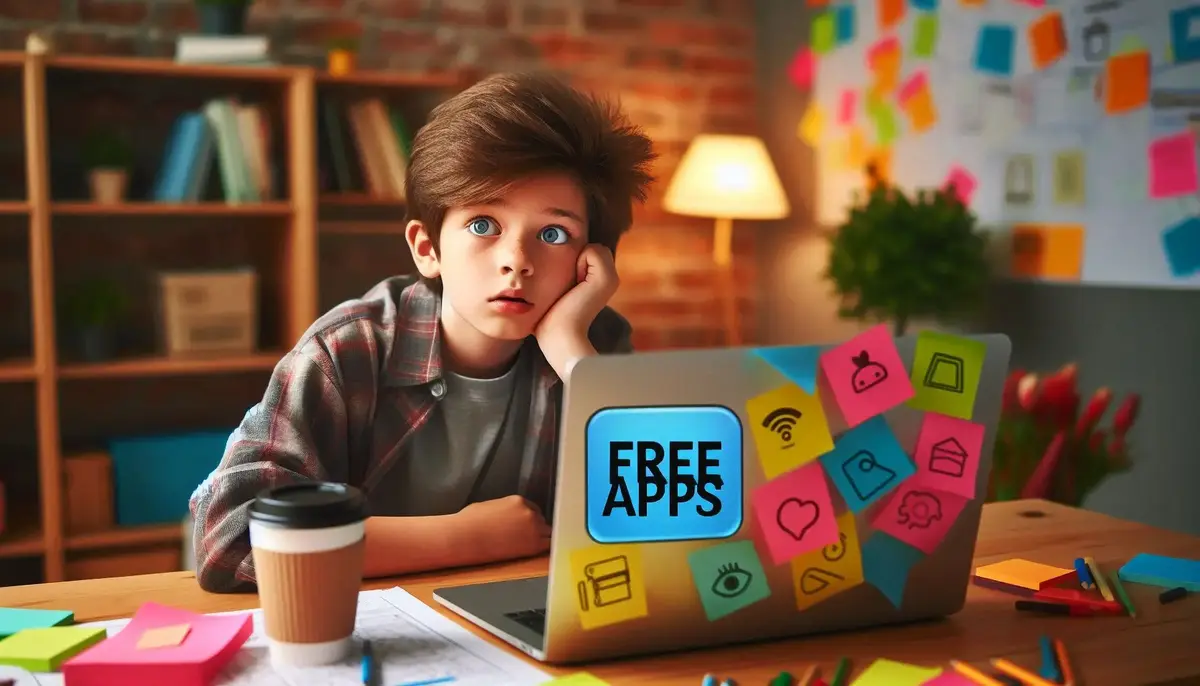In today’s digital world, smartphones are filled with apps that promise a wide range of benefits from entertainment and fitness to finance and productivity all for the unbeatable price of free. But as the old saying goes: “There’s no such thing as a free lunch.” 🍽️
So, do free apps actually cost money? The answer isn’t a simple yes or no. While many free apps won’t ask for your credit card upfront, they often come with hidden costs and in some cases, you could be paying far more than you realize. Let’s explore what “free” really means in the app economy.
💡 UNDERSTANDING FREE APPS: TYPES & MONETIZATION MODELS
Not all free apps are created equal. Most fall into these common categories:
1. Freemium Apps
These are free to download and use, but some features are locked behind a paywall.
Example: Spotify 🎧 (free basic plan, but premium offers no ads and downloads)
Common tactics: Limited storage, blurred features, restricted access.
2. Ad-Supported Apps
You don’t pay with money you pay with your attention. These apps generate revenue through ads.
Example: Mobile games like Candy Crush or news apps with banner ads.
Hidden cost: Time lost watching ads and possibly data used for targeted advertising.
3. In-App Purchases (IAP)
The app itself is free, but it nudges you to spend money on upgrades, virtual currency, lives, or levels.
Example: Clash of Clans, PUBG, or any gacha game.
Risk: Kids (and even adults) racking up unexpected charges.
4. Subscription-Based After Trial
Some apps offer a free trial, then auto-renew a paid subscription.
Example: Netflix, Canva, or photo editing tools like VSCO.
Trap: Forgetting to cancel before trial ends = automatic billing. 😓
🔍 SO, WHAT ARE YOU REALLY PAYING WITH?
Let’s break it down:
📊 1. Your Personal Data
Data is the new oil. Many “free” apps collect:
Location
Contacts
Browsing behavior
Purchase history
This data can be sold to advertisers or data brokers, which is incredibly profitable.
🧠 2. Your Time & Attention
Free apps are designed to keep you engaged (or addicted) as long as possible. The longer you stay, the more ads you see and the more money the developer makes.
⚠️ 3. Security & Privacy Risks
Many free apps, especially lesser-known ones, don’t follow strict data encryption or user protection rules. This means:
Potential data leaks
Unauthorized permissions (e.g., accessing your microphone or camera)
Spam emails, calls, or even identity theft
💸 4. Indirect Financial Costs
From in-app purchases to mobile data charges and even battery drain free apps can be costly in hidden ways.
🔐 HOW TO PROTECT YOURSELF FROM FREE APP PITFALLS
Before you download that “free” app, here are smart precautions to take:
✅ 1. Read the Reviews
User feedback can reveal hidden paywalls, sneaky charges, or bad privacy practices.
✅ 2. Check Permissions
If a flashlight app wants access to your contacts that’s a red flag! 🚩
✅ 3. Use Reputable Sources
Download apps from Google Play Store or Apple App Store, and verify developer authenticity.
✅ 4. Monitor Subscriptions
Use tools or settings to track active subscriptions and avoid being charged for unused apps.
✅ 5. Use App Alternatives
Look for open-source apps or apps from well-reviewed nonprofit developers.
🤯 REAL-LIFE EXAMPLES OF “FREE” APPS THAT COST YOU
Facebook & Instagram – Free to use, but harvest massive amounts of data for advertising.
TikTok – Free app with addictive algorithms designed to maximize time spent, with ongoing data privacy concerns.
Mobile Games – Often loaded with in-app purchases and ads. Some users spend hundreds to thousands to progress faster.
🧠 WHY DEVELOPERS MAKE FREE APPS
It’s not always about tricking users sometimes, free apps serve a strategic business goal, such as:
User growth: Get as many users as possible before monetizing.
Brand exposure: Build awareness or gather feedback.
Data collection: Useful for market research, ad targeting, or partnerships.
Freemium Upsells: Hook users with value, then convert them to paying customers.
🔍 THE PSYCHOLOGY BEHIND “FREE” WHY WE FALL FOR IT
Humans are wired to love free stuff. The zero-cost label triggers excitement and lowers our guard. But in reality:
“Free” often leads to impulse downloads
You might ignore terms & conditions
Kids especially struggle with in-app purchases
That’s why parents, professionals, and even savvy users need to rethink what “free” really means in today’s app stores
✅ WHEN FREE IS ACTUALLY FREE
There are genuine free apps, especially from:
Open-source communities (like Firefox or VLC)
Educational institutions (like Duolingo or Khan Academy)
Non-profits and public services (like health and emergency apps)
These apps usually have transparent policies and limited monetization motives. Still, it’s wise to double-check.
📌KEY TAKEAWAYS
✅ Freemium, ad-supported, and in-app purchase models dominate free apps
📱 Your data, time, and attention are the real currency
🔐 Privacy and security can be compromised with careless downloads
💸 Indirect costs include mobile data usage, battery drain, and surprise subscriptions
🚫 Avoid apps that demand excessive permissions
⭐ Trust apps from reputed developers and open-source communities
💡 Free doesn’t always mean bad it just means you should be informed
🔎 Always read reviews and app policies before installing
🔁 Track your subscriptions and uninstall unused apps regularly
🎯 Use digital wellness tools to reduce screen time from attention-hungry apps
💼 CONCLUSION🚨
“Free” apps may not always cost cash, but they can cost you time, data, attention, and peace of mind. Understanding how they work empowers you to make smarter decisions and take control of your digital life.
